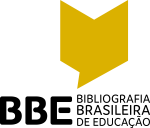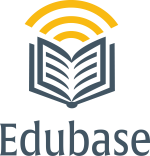Summaê: um espaço criativo para aprendizagem
DOI:
https://doi.org/10.7213/1981-416X.17.052.DS05Palavras-chave:
Aprendizagem ativa. Aprendizagem criativa. SummaêResumo
Este artigo apresenta alguns avanços sobre uma metodologia ativa conhecida como Summaê, utilizada em várias regiões do país e em diversos campos do conhecimento. A primeira publicação sobre esse tema data de 2012 e, apesar de os fundamentos serem os mesmos das primeiras experiências feitas em turmas de Engenharia, algumas adaptações foram realizadas para que pudesse ser aplicado de modo mais abrangente, inclusive na educação a distância e na educação corporativa. Além de apresentar a metodologia de forma mais consistente e detalhada, são analisados resultados qualitativos de 18 professores que participaram diretamente da organização de Summaês em suas instituições, com o intuito de estudar as possíveis dificuldades encontradas, principais vantagens, reações dos estudantes e seu engajamento sob a óptica do professor. Os resultados mostram que os docentes tiveram pouca ou nenhuma dificuldade na realização do Summaê e as principais reações dos estudantes foram de motivação, alegria, aproximação, divertimento, entusiasmo, concentração e espírito de equipe.Downloads
Referências
BRACKETT, M. A. et al. Assessing teachers’ beliefs about social and emotional learning. Journal of Psychoeducational Assessment, v. 30, n. 3, p. 219-236, 2012.
CROPLEY, D. H. Promoting creativity and innovation in Engineering education, Psychology of aesthetics. Creativity and the Arts, v. 9, n. 2, p. 161-171, 2015.
FRAGELLI, R. R. et al. Summaê: um método diferente para o ensino de integrais. In: INTERNATIONAL SYMPOSIUM ON PROJECT APPROACHES IN ENGINEERING EDUCATION. 1., 2012, São Paulo. Proceedings..., São Paulo: PUC-SP, 2012. p. 109-114.
FRAGELLI, R. R.; FRAGELLI, T. B. O. Trezentos: a dimensão humana do método. Educar em Revista, n. 63, p. 253-265, 2017.
GRAY, P. Free to learn: why unleashing the instinct to play will make our children happier, more self-reliant, and better students for life. New York: Basic Books, 2013.
HAMARI, J. et al. Challenging games help students learn: an empirical study on engagement, flow and immersion in game-based learning. Computers in Human Behavior, n. 54, p. 170-179, 2016.
HOFFMAN et al. The perceived effects of faculty presence vs. absence on small-group learning and group dynamics: a quasi-experimental study. BMC Medical Education, v. 14, n. 1, p. 258-265, 2014.
HOFSTEIN, A.; ROSENFELD, S. Bridging the gap between formal and informal science learning. Studies in Science Education, v. 28, n. 1, p. 87-112, 1996.
JANG, H.; REEVE, J.; DECI, E. L. Engaging students in learning activities: it is not autonomy support or structure but autonomy support and structure. Journal of Educational Psychology, v. 102, n. 3, p. 588-600, 2010.
LAI, C. et al. Using positive visual stimuli to lighten the online learning experience through in class questioning. International Review of Research in Open and Distributed Learning, v. 17, n. 1, p. 23-41, jan. 2016.
PARTNERSHIP FOR 21ST CENTURY SKILLS (P21). Framework for 21st century learning. 2014. Disponível em: <http://www.p21.org/our-work/p21-framework>. Acesso em: 11 maio 2017.
PATRICK, H.; KAPLAN, A.; RYAN, A. M. Positive classroom motivational environments: convergence between mastery goal structure and classroom social climate. Journal of Educational Psychology, v. 103, n. 2, p. 367-382, 2011.
REYES, M. R. et al. Classroom emotional climate, student engagement, and academic achievement. Journal of Educational Psychology, v. 104, n. 3, p. 700-712, 2012.
ROCKMAN, S.; BASS, K.; BORSE, J. Media-based learning science in informal environments. Learning science in informal environments committee of the National Research Council National Academy of Science, 2007. Disponível em: <https://rockman.com/docs/downloads/MediaBasedLearningScience.pdf>. Acesso em: 10 maio 2017.
ROGERS, C. R. Liberdade para aprender. Belo Horizonte: Interlivros, 1973.
______. Tornar-se pessoa. São Paulo: Martins Fontes, 1991.
SEFTON-GREEN, J. Learning at not-school: a review of study, theory, and advocacy for education in non-formal settings. Massachusetts: MIT Press, 2013.
STEWART, O. G.; JORDAN, M. E. “Some explanation here”: a case study of learning opportunities and tensions in an informal science learning environment. Instructional Science, v. 45, n. 2, p. 137-156, 2016.
SUMMAÊ. Breve história do Summaê. Disponível em: <http://summaeh.com/historia>. Acesso em: 12 maio 2017.
TUYAY, S.; JENNINGS, L.; DIXON, C. Classroom discourse and opportunities to learn: an ethnographic study of knowledge construction in a bilingual third-grade classroom. Discourse Processes, v. 19, n. 1, p. 75–110, 1995.
Downloads
Publicado
Como Citar
Edição
Seção
Licença
O(s) autor(es) transfere(m), por meio de cessão, à EDITORA UNIVERSITÁRIA CHAMPAGNAT, pessoa jurídica de direito privado, inscrita no CNPJ/MF sob o n.º 76.659.820/0009-09, estabelecida na Rua Imaculada Conceição, n.º 1155, Prado Velho, CEP 80.215-901, na cidade de Curitiba/PR, os direitos abaixo especificados e se compromete a cumprir o que segue:
- Os autores afirmam que a obra/material é de sua autoria e assumem integral responsabilidade diante de terceiros, quer de natureza moral ou patrimonial, em razão de seu conteúdo, declarando, desde já, que a obra/material a ser entregue é original e não infringe quaisquer direitos de propriedade intelectual de terceiros.
- Os autores concordam em ceder de forma plena, total e definitiva os direitos patrimoniais da obra/material à EDITORA UNIVERSITÁRIA CHAMPAGNAT, a título gratuito e em caráter de exclusividade.
- A CESSIONÁRIA empregará a obra/material da forma como melhor lhe convier, de forma impressa e/ou on line, inclusive no site do periódico da EDITORA UNIVERSITÁRIA CHAMPAGNAT, podendo utilizar, fruir e dispor do mesmo, no todo ou em parte, para:
- Autorizar sua utilização por terceiros, como parte integrante de outras obras.
- Editar, gravar e imprimir, quantas vezes forem necessárias.
- Reproduzir em quantidades que julgar necessária, de forma tangível e intangível.
- Adaptar, modificar, condensar, resumir, reduzir, compilar, ampliar, alterar, mixar com outros conteúdos, incluir imagens, gráficos, objetos digitais, infográficos e hyperlinks, ilustrar, diagramar, fracionar, atualizar e realizar quaisquer outras transformações, sendo necessária a participação ou autorização expressa dos autores.
- Traduzir para qualquer idioma.
- Incluir em fonograma ou produção audiovisual.
- Distribuir.
- Distribuir mediante cabo, fibra ótica, satélite, ondas ou qualquer outro sistema que permite ao usuário realizar a seleção da obra ou produção para recebê-la em tempo e lugar previamente determinados por quem formula a demanda e nos casos em que o acesso às obras ou produções se faça por qualquer sistema que importe em pagamento pelo usuário.
- Incluir e armazenar em banco de dados, físico, digital ou virtual, inclusive nuvem.
- Comunicar direta e/ou indiretamente ao público.
- Incluir em base de dados, arquivar em formato impresso, armazenar em computador, inclusive em sistema de nuvem, microfilmar e as demais formas de arquivamento do gênero;
- Comercializar, divulgar, veicular, publicar etc.
- Quaisquer outras modalidades de utilização existentes ou que venham a ser inventadas.
- Os autores concordam em conceder a cessão dos direitos da primeira publicação (ineditismo) à revista, licenciada sob a CREATIVE COMMONS ATTRIBUTION LICENSE, que permite o compartilhamento do trabalho com reconhecimento da autoria.
- Os autores autorizam a reprodução e a citação de seu trabalho em repositórios institucionais, página pessoal, trabalhos científicos, dentre outros, desde que a fonte seja citada.
- A presente cessão é válida para todo o território nacional e para o exterior.
- Este termo entra em vigor na data de sua assinatura e é firmado pelas partes em caráter irrevogável e irretratável, obrigando definitivamente as partes e seus sucessores a qualquer título.
- O não aceite do artigo, pela EDITORA UNIVERSITÁRIA CHAMPAGNAT, tornará automaticamente sem efeito a presente declaração.












